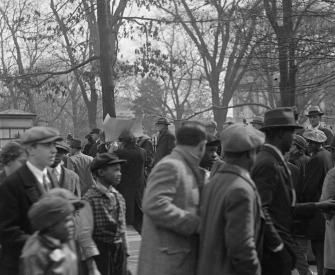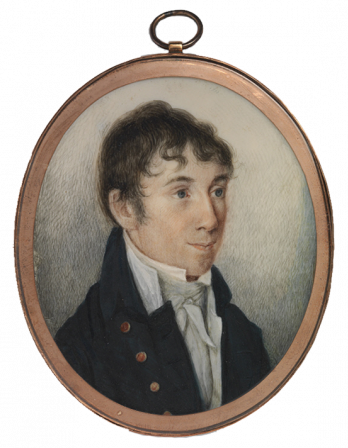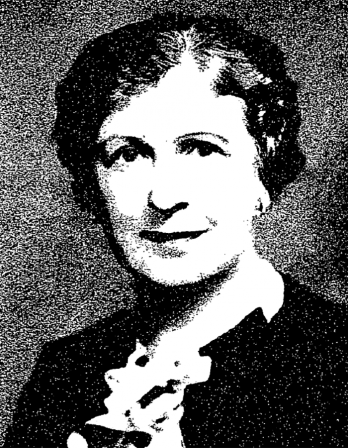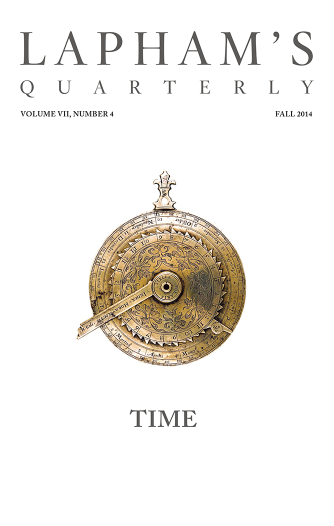What one knows is, in youth, of little moment; they know enough who know how to learn.
—Henry Adams, 1907What Garrett Epps Learned in School
The racist propaganda in history textbooks.
Virginia Republican gubernatorial candidate Glenn Youngkin has decided that next month’s off-year election is a referendum on something called critical race theory. CRT, he says, is a sinister force working to divide Americans by injecting race issues into education. “To judge one another based on the content of our character, not the color of our skin,” he told a rally in Ashburn, Virginia, in September, “means we’re going to ban critical race theory.”
It is fashionable these days for progressives like myself to sneer at the hue and cry against critical race theory in the schools. But let’s get real: some textbooks taught to Virginia children have contained virulent antiwhite propaganda.
Consider this passage from a Virginia public school textbook: “From the first recorded landing of Negroes at Jamestown in 1619 until the end of the colonial period, Virginia opposed a mixed population of the two races,” it says. “Above all, the colony was determined to preserve the racial purity of the whites. This determination is the foundation upon which Virginia’s handling of the racial issue rests, and has always rested.”
Can we at least agree that such divisive rhetoric should not be allowed in schools? It can have bad effects. I know because the passage above, along with a lot of other racist bilge, was taught to me in 1961 in a state-mandated elementary school course in Virginia history; the textbook from which that quote comes, A Hornbook of Virginia History, edited by J.R.V. Daniel, was published in 1949 by the Virginia State Library for use in schools.
Youngkin and I are (as we don’t say in the South) paisan—I grew up in Richmond, and he is from Norfolk. He is younger than I, but similar state-sponsored textbooks were used at different grade levels until 1972—the year Youngkin would have entered school—and longer in some places. The bad effects are still being felt—and indeed, some of the rage against CRT comes from people who as children absorbed, from textbooks or teachers, the commonwealth’s official creed of racism.
The original “crits”—the first to see everything in American history through the lens of race—were Southern whites themselves, who were proud to espouse the superiority of the white race and made sure that no schoolbook or teacher was permitted to question it.
One Youngkin supporter told the Washington Post that CRT is “just such a focus on race. My children weren’t raised that way. I wasn’t raised that way. We have friends of every religion, creed. They’re well traveled. They just don’t view the world through that lens. And I think it is so unfortunate and sad and so divisive for anybody to put that lens in front of them.”
That brings up two points: First, politicians (and even some newspeople) are using the term critical race theory the way Vizzini in The Princess Bride uses the word inconceivable. They seem to think it means something like “Trotskyites,” whose malice Stalinists blamed for every shortcoming of the Five-Year Plan. It does not even mean “every use of the concept of race in history classes that might make an older white person uncomfortable,” which appears to be what Youngkin means by it. In fact, its use in politics was originated by a right-wing “journalist” looking for a handy weapon to attack any attempts to combat racism in education and the workplace.
In thirty years as a legal academic, I got to know CRT and its proponents well. I have read many papers and attended many academic panels where their views are presented. I found some electrifying and others to be over-the-counter sleep aids. CRT is an academic movement, born in law schools, with all the virtues and limitations that name implies. It has a lot to offer, and it generates some very interesting disagreements among people who take the trouble to learn what it is. What it is not is a disease or a conspiracy hovering behind any teacher or book that suggests that racism is a problem in the twenty-first century.
The second point is that even if critical race theory were exerting some massive influence on K–12 education in America (it isn’t), and even if critical race theory had as its aim the instilling of shame in white students (it doesn’t), none of its efforts would compare in scope and determination with the systematic and successful seventy-five-year campaign by Virginia and other Southern states to control what was taught to students, and what students, black and white, were allowed to read and think about race and racism. When we consider Virginia parents complaining that they “weren’t raised that way,” this history needs to be considered.
In fact, a rigorous program of ideological conformity has been a part of Southern culture since the 1831 Nat Turner rebellion in Virginia. On the excuse of preventing more slave revolts, not only were antebellum schools and universities purged of antislavery teachers and books, the very mails were censored to ensure that no antislavery publications reached Dixie. The historian Clement Eaton christened this process of ideological purification “the intellectual blockade,” and it survived intact at least until Appomattox.
The blockade briefly fell after the Civil War, but as the historian Fred Arthur Bailey of Abilene Christian University wrote twenty years ago in “Textbooks of the ‘Lost Cause,’ ” the Sons of Confederate Veterans and the United Daughters of the Confederacy, newly energized by the triumph of Jim Crow, began a successful campaign during the 1890s to require the teaching of “state histories” written by neo-Confederates. These textbooks explained that slavery was a benign system, that secession was legal and justified, that the Confederacy’s Lost Cause was noble, and that Confederate leaders were American patriots.
But eternal vigilance is the price of racial conformity. In 1948, a few weeks after President Harry Truman announced a modest federal civil rights program, Southern leaders began to worry anew whether schoolchildren were learning the proper attitudes toward race and the South. In Richmond legislators created the Virginia History and Textbook Commission. That commission was dominated by segregationist politicians—most prominently including state senator Garland Gray. (Gray, a Southside planter, a few years later would chair another state commission, this one studying Brown v. Board of Education. That “Gray Commission” would recommend a voucher plan under which no white student would be required to attend a school with black children.)
The Textbook Commission ordered (and extensively edited, rewrote, and censored) its own set of textbooks, whose use was required in schools. These textbooks, only slightly revised in 1964, weren’t “withdrawn” by the State Board of Education until 1972; even after that, as the William and Mary history professor Carol Sheriff explained in 2012, some school systems defiantly continued their use.
One of the three, Virginia’s History and Geography, explained that the Lost Cause was inspired by state’s rights and pure altruism: “Virginians love the United States and did not want to leave it. But Virginians wanted people in every state to have their rights.” After the war, it said, “Robert E. Lee, because of his greatness, his bravery, and his love for Virginia, would always be a hero.” Another, Virginia: History, Government, Geography, explained that slavery “made it possible for the Negroes to come to America and make contacts with civilized life.” They were lucky to live “far away from the spears and war clubs of enemy tribes” in Africa. Plantation life was “happy and prosperous.” True, there was a teeny, tiny bit of whipping, but “whipping was also the usual method of correcting children,” and anyway, “all slaves were given medical care.”
A third, Cavalier Commonwealth: History and Government of Virginia, explained that Virginia’s slave masters “regarded themselves as benefactors of a backward race,” and “indeed in some respects they obviously were.” Slaves were given “plentiful food…warm cabins, leisure, and free health care.”
Finally, the book I quoted at the outset, A Hornbook of Virginia History, told students: “The debt the Negro race owes to Virginia and the South has never been less recognized than it is today. Virginia took a backward race of savages, part cannibal, civilized it, developed many of its best qualities.”
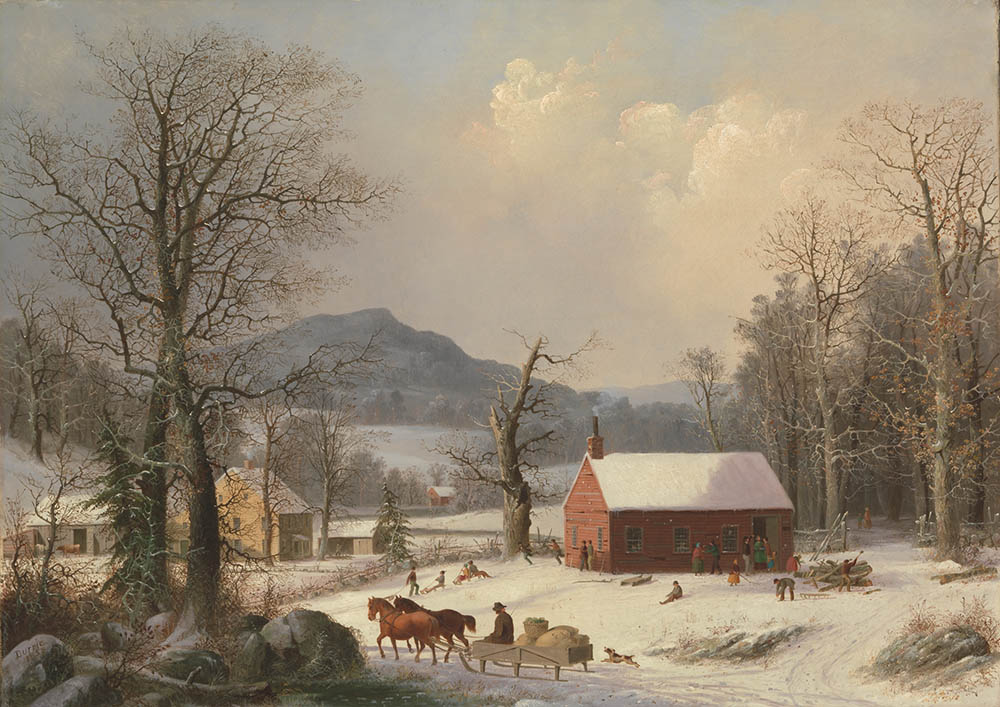
Red School House (Country Scene), by George Henry Durrie, 1858. The Metropolitan Museum of Art, bequest of Peter H.B. Frelinghuysen, 2011.
Please remember: These textbooks were prepared by a state commission using tax dollars and taught in public schools in courses students were required by law to attend—black students as well as white. Parents worried about how textbooks will affect white students need to cope with the fact that three generations of black students were subjected to these books.
The issue is not whether Youngkin read these books as a student; it is that he and I both grew up white and privileged in a society profoundly shaped by this shameful state-imposed racial ideology. Many of my teachers—and undoubtedly many of those who taught Youngkin at his tony prep school, Norfolk Academy—believed implicitly in these myths, spoke of them often, and would not tolerate dissent from them.
In other words, we were “raised that way.” And the moral stature of the Youngkins of the world to invoke Martin Luther King as a way to shut down racial dialogue is, shall we say, slight.
In fact, the entire hue and cry against CRT is not about ending division; it is about preserving it. It is not about racial reconciliation; it is about inspiring racial panic, of the kind that swept the South in the 1830s, the 1890s, and the 1950s. That this phony scare is active in states outside the South is a sign of the success the conservative movement has achieved in exporting the religious, political, and racial values of the South to states in the heartland. It is no longer only in the old Confederacy that questioning of the racial order is seen as next to treason.
Glenn Youngkin is simply the latest in a line of mountebanks willing to stir race hatred and fear to gain power.
He knows how it is done; like me, he learned it in school.
From “Want to Know More About Critical Race Theory?” Washington Monthly, October 25, 2021. Copyright © 2021 by Garrett Epps. Used with permission of Washington Monthly.
Garrett Epps
From “Want to Know More About Critical Race Theory?,” an article that ran in Washington Monthly the month before Youngkin was elected governor. Some credited Youngkin’s upset victory in part to his focus on education. On the day he was sworn in, Youngkin fulfilled a campaign pledge by signing an executive order calling for a ban on “the use of inherently divisive concepts, including Critical Race Theory,” in schools. He went on to open a confidential tip line for parents to report such teaching, to “help us be aware of…their child being denied their rights that parents have.”
